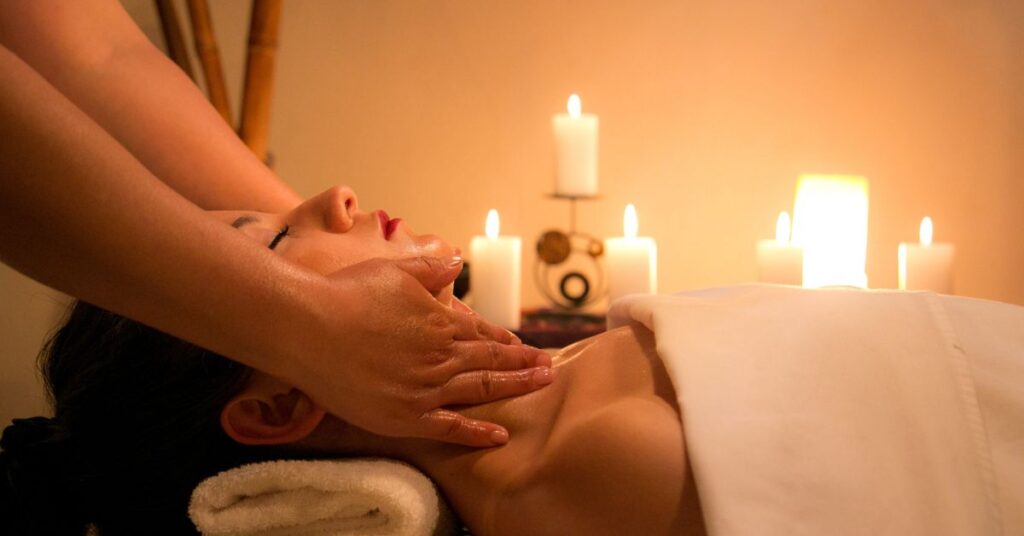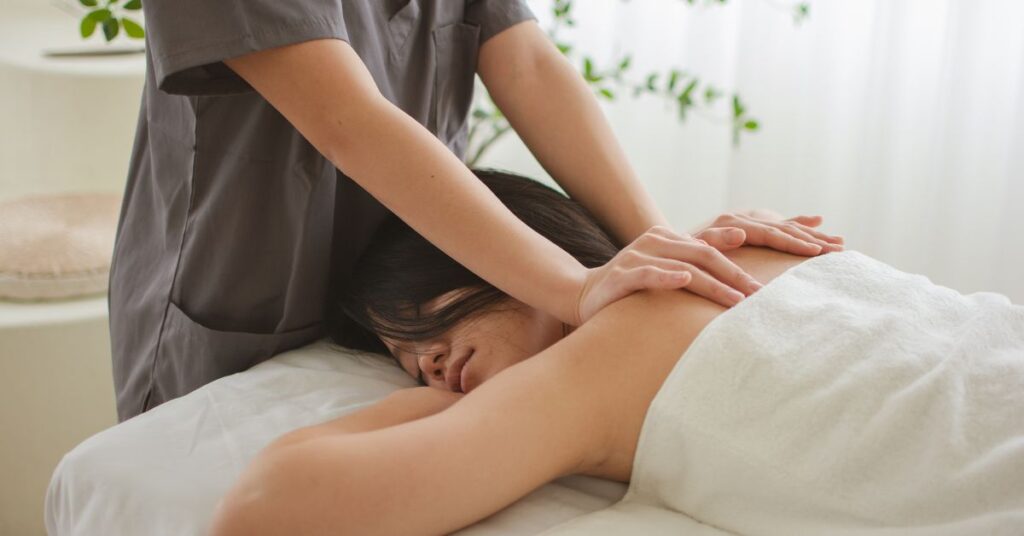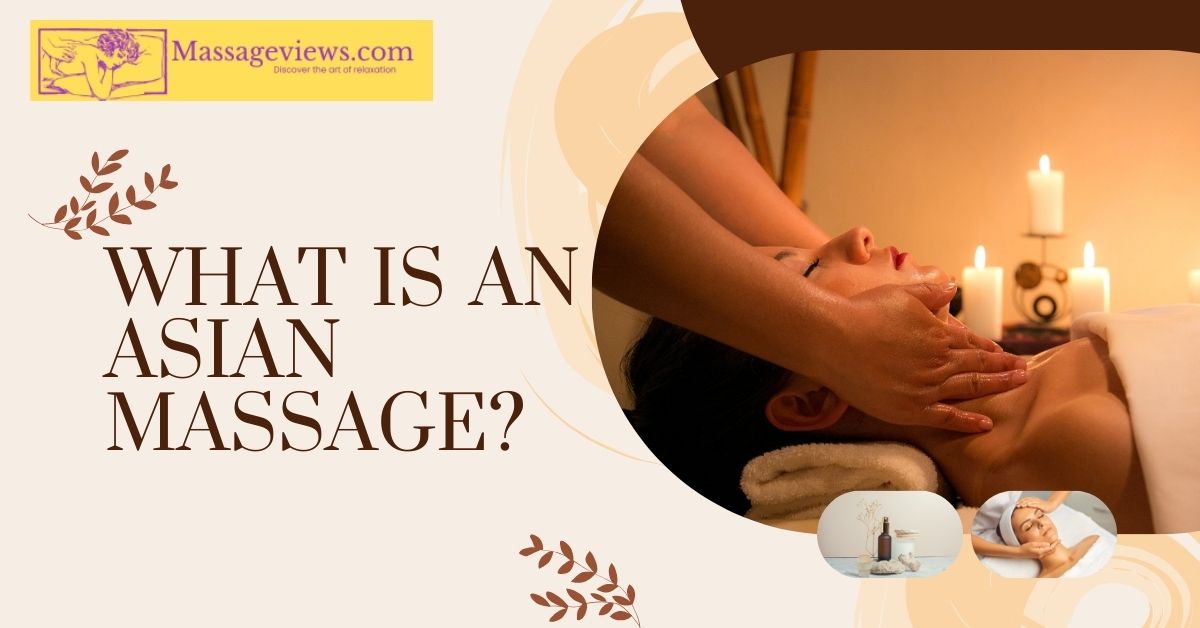One common question that comes up when learning more about the vast field of therapeutic bodywork is What is an Asian massage? Asian massage encompasses a range of age-old therapeutic techniques that have their roots in nations like China, Japan, Korea, and Thailand. Known for their holistic approach, these massages combine physical methods with age-old wisdom to enhance well-being.
Asian massage techniques, such as acupressure, shiatsu, and Thai massage, are frequently linked to improving general health and regulating energy flow. The phrase refers to a wide range of culturally grounded therapies, each with special advantages for revitalization, stress reduction, and relaxation.
Table of Contents
What is an Asian massage and its importance?
Asian massages are healing arts whose origins can be traced to ancient China, around 2700 BCE. It includes a range of massage techniques that have their roots in Asian nations like China and Japan. Asian massage is important because it takes a comprehensive approach to health. Asian massage, in contrast to Western massage, is based on the idea that many health problems originate from an imbalance or blockage in the body’s meridians, which is the flow of energy.
There are several reasons why Asian massage is important. It tries to calm, soothe, and heal the body by balancing the release of tension and fostering the unimpeded flow of energy. These methods aim to balance the body’s internal elements, or chakras, in addition to treating physical suffering. Asian massage extends beyond simple physical relief; it frequently includes elements of martial arts, Chinese medicine, and spirituality.
In general, Asian massage is significant because it takes a holistic approach to health, treating the physical and energy levels to promote equilibrium and overall well-being. Asian massage, whether using acupressure, Anma, Chi Nei Tsang, or other techniques, offers a healing experience that takes into account the interdependence of the body, mind, and spirit.

Further reading: What To Expect From Asian Massage?
Different Types of Asian Massage
Asian massage is a vast and varied field that offers a tapestry of centuries-old healing techniques. Many different massage techniques, each with its philosophy and technique, have arisen from nations like China and Japan and are collectively referred to as Asian massage. As we investigate the various forms of Asian massage, we dig into a patchwork of therapeutic customs that go beyond simple relaxation.
A comprehensive understanding of the body’s energy flow is presented by the various styles of acupressure, Anma, Chi Nei Tsang, Jin Shin Do, Jin Shou Tuina, Medical Qigong, and Nuad Bo ‘Rarn. Each style carries its unique techniques. This exploration of the many Asian massage techniques reveals a world in which traditional knowledge melds with cutting-edge medical techniques to promote harmony and well-being.
AMMA
Among the many different Asian massage styles, AMMA is a practice with roots in traditional Japanese massage. The term “AMMA” designates the ancient art form as well as the practitioners who specialize in it. AMMA originated from Tui Na, a Chinese method that was brought to Japan in the Nara era (710–793 CE). With the help of acupuncturist Sugiyama Waichi, AMMA became well-known in the seventeenth century.
AMMA uses a variety of methods to encourage overall health and well-being. AMMA instructors target particular body spots with a combination of kneading, tapping, and pushing techniques during a session. AMMA’s origins can be found in the Fujibayashi school, which established the framework for the sport as it exists now. Asian massage therapists who practiced AMMA in the past were frequently itinerant, offering mobile massage services and compensating referrers with commissions.
AMMA’s popularity was challenged in the nineteenth century by its link with Japan’s urban lifestyles, but it survived and was practiced separately from shiatsu. In the present day, AMMA practitioners frequently journey to other regions, such as Miami, to provide massage therapy training. The AMMA techniques provide a synthesis of traditional knowledge and healing methods, adding to the wider field of Asian massage.
Acupressure
An essential component of Asian massage therapy, acupressure is a complementary medicine approach that resembles acupuncture. Acupressure has its roots in traditional Chinese medicine and is based on the idea that the body’s meridians carry Qi or life energy. The basic premise is that obstructions in these energy lines can be cleared by physically pressing on particular acupuncture spots.
A therapist may apply pressure to particular areas on the body using their hands, elbows, or other tools during an Asian body massage that includes acupressure. The purpose of these carefully selected spots, which are founded on the principles of traditional Chinese medicine, is to stimulate the meridian system and bring the body’s yin, yang, and qi (energy) flow back into balance.
Research indicates that acupressure administered by an Asian massage practitioner may be useful in treating a range of ailments, including stomachaches, tension headaches, lower back discomfort, and nausea and vomiting. Acupoints that may or may not be in the same location as the targeted symptom are moved during therapy. Acupressure is also used in martial arts for self-defense, manipulating, or immobilizing an opponent with the use of points.
Jin Shin Do
A unique form of Asian massage therapy, Jin Shin Do incorporates aspects of Taoist philosophy, Qigong, Reichian segmental theory, traditional Japanese acupressure, Chinese acupuncture and acupressure theory, and Ericksonian psychotherapy ideas. Jin Shin Do, created in the 1970s by psychotherapist Iona Marsaa Teeguarden, combines vocal body-focusing techniques with subtle, deep finger pressure on particular acupoints.
To relieve stress and encourage a harmonious flow of energy throughout the body, an Asian massage therapist applies precise pressure to certain acupoints during a Jin Shin Do session. The U.S. Department of Education, AOBTA, NCBTMB, NCCAOM, and other organizations recognize the practice as a primary form of Asian massage therapy.
It’s important to understand that Jin Shin Do is not meant to be used for medical diagnosis, treatment, or recovery. Rather, it is seen as an adjunct to certified medical or psychiatric care and an Asian massage relaxing therapy. The concept of Jin Shin Do places emphasis on how, when combined with conventional medical care, it can help release tension, reduce stress, and enhance a sense of greater well-being.
Chi Nei Tsang
Asian massage therapies include the Chinese deep healing system known as Chi Nei Tsang. It focuses on the flow of energy in the vascular, lymphatic, neural, tendon/muscle, and acupuncture meridians—the five main systems in the body. An Asian full-body massage therapist works on the abdomen during a Chi Nei Tsang session, rubbing particular places around the navel to improve the flow of energy to the organs and other areas of the body.
The goal of the exercise is to direct healing energy into other parts of the body and relieve energy blockages in the navel area. Chi Nei Tsang, created by Master Mantak Chia, was incorporated into Asian massage traditions, including those in Miami.
Chi Nei Tsang is distinct in that it places a strong focus on the abdomen, viewing it as a hub for both mental and physical health. The massage therapist treats tension, supports organ health, and rebalances the body’s energy systems using a variety of techniques, including deep tissue massage.
Nuad Bo ‘Rarn
Often referred to as Thai massage or traditional Thai massage, Nuad Bo ‘Rarn is a traditional Thai medicinal bodywork style that combines aspects of Traditional Chinese Medicine and Indian Buddhist Medicine. This unusual Asian massage method, which has its roots in Thailand, uses a blend of passive movement, stretches, and hand techniques to clear the energy channels, reduce long-term stress, and improve general health.
A Nuad Bo ‘Rarn practitioner applies pressure to particular places and energy lines on the body using their palms, thumbs, elbows, knees, and feet. The recipient remains completely clothed, and the massage is performed on a mat on the floor. To help with a thorough release of tension and to increase flexibility, the therapist uses a combination of rhythmic compression and light stretching techniques.
Medical Qigong
A long-standing area of Chinese medicine that dates back thousands of years is known as medical qigong. Medical Qigong, like acupuncture and tuina (an additional type of Chinese massage therapy), is grounded in ancient Chinese philosophy and meridian and point theories. This therapy approach incorporates a variety of techniques, such as guided imagery, psychosomatic exercises, meditation, and breath training.
Medical Qigong practitioners are skilled in transferring and manipulating Qi, or energy, to promote a therapeutic reaction. Medical Qigong is a healing technique used by qualified therapists to manage a variety of health issues and enhance general well-being, in contrast to self-Qigong exercises, which are taught for personal use.
Medical Qigong therapists assist patients in addressing particular health concerns, encouraging relaxation, and strengthening the body’s inherent healing capacity. This therapy technique offers a comprehensive and integrated way to assist both physical and energetic well-being. It is firmly based on the concepts of Chinese medicine.

The benefits of Asian massage therapy
Here are the benefits of Asian massage therapy
1: Improved Blood Circulation
- Enhances oxygen and blood flow throughout the body.
- Supports overall cardiovascular health.
- Boosts the body’s natural healing ability.
2: Relieving Pain
- Targets key points to release tension and alleviate body aches.
- Provides long-term relief from chronic pain.
- Facilitates the body’s self-healing response.
3: Relief From Depression and Anxiety
- Utilizes massage strokes, acupressure, and techniques like yoga to promote relaxation.
- Helps in letting go of emotional stress and anxiety.
- Contributes to mental well-being by addressing emotional issues.
4: Holistic Well-Being
- Balances the body’s inner elements or chakras.
- Addresses physical, mental, and spiritual aspects of health.
- Promotes an overall sense of harmony and well-being.
5: Diverse Techniques for Individual Needs
- Offers a variety of Asian massage techniques like acupressure, Anma, Chi Nei Tsang, Jin Shin Do, and more.
- Tailors treatments to meet individual health and relaxation needs.
6: Enhanced Flexibility and Range of Motion
- Utilizes stretching techniques to improve flexibility.
- Increases the range of motion in joints and muscles.
- Aids in maintaining a healthy and active lifestyle.
7: Stress Reduction
- Induces a deep state of relaxation.
- Reduces stress hormones in the body.
- Promotes mental clarity and emotional balance.
8: Supports Respiratory Health
- Improves the respiratory system through enhanced breathing patterns.
- Addresses breathing difficulties and promotes lung health.
9: Boosted Immunity
- Improves overall health, contributing to a stronger immune system.
- Helps the body resist illnesses and diseases.
10: Cultural and Therapeutic Integration
- Integrates ancient wisdom from Chinese and Japanese traditions.
- Provides a unique blend of cultural and therapeutic experiences.
Why did you choose Asian massage therapy?
Because Asian massage therapy has a holistic approach and skillfully combines traditional knowledge with cutting-edge therapeutic techniques, you selected it. The many methods, including Anma, Chi Nei Tsang, and acupressure, treat the mental, emotional, and physical bodies.
This age-old method delivers significant advantages like better circulation, pain reduction, and mental well-being in addition to promoting relaxation. Asian massage treatment offers a thorough and culturally rich route to holistic well-being, which is in line with my belief in the interdependence of mind, body, and spirit.
What is the difference between Asian massage and Western massage?
The basic ideas and methods that distinguish Asian and Western massage differ from one another. Asian massage, which has its roots in antiquated customs like Chinese and Japanese massage, combines meridian manipulation and acupressure to target the body’s energy flow. Its goal is total well-being, and sessions are frequently done while dressed.
Western massage, on the other hand, typically focuses on stress alleviation and muscular relaxation using methods like Swedish massage, which are typically administered on bare skin. While Western massage focuses on physical relaxation, Asian massage aims to achieve energetic harmony. Asian massage also frequently combines spiritual and cultural components, making it a special kind of therapy.
Frequently asked questions
Is Asian massage suitable for everyone?
Generally, Asian massage is safe for most individuals. However, it’s advisable to consult with a healthcare professional before seeking therapy, especially for those with certain health conditions.
Are the benefits of Asian massage supported by scientific research?
Some studies suggest that Asian massage techniques, such as acupressure, may be effective for managing specific conditions like nausea and lower back pain. However, more research is needed.
How long is a typical Asian massage session?
The duration of a session can vary, but it often lasts around 60 to 90 minutes. The specific type of massage and individual preferences may influence the session length.
Can I combine Asian massage with other forms of therapy?
Yes, Asian massage can complement other therapeutic approaches. However, it’s advisable to inform your massage therapist about any ongoing treatments or health concerns for a personalized experience.
